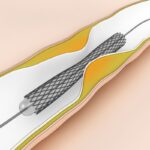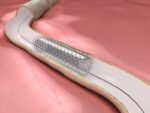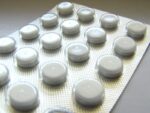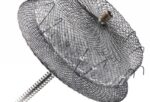Original title: Meta-analysis of randomized clinical trials comparing short term -vs- long term dual antiplatelet therapy following drug eluting stents. Reference: El-Hayek G et al. Am J Cardiol. 2014; Epub ahead of print. This meta-analysis examined the data of four randomized and controlled studies (EXCELLENT, PRODIGY, RESET y OPTIMIZE) including 8157 patients receiving sirolimus, paclitaxel, everolimus or zotarolimus<a href="https://solaci.org/en/2014/06/24/3-to-6-months-of-dual-antiplatelet-after-des-reduced-bleeding-and-did-not-raise-mortality-or-infarction/" title="Read more" >...</a>
Elevated C-reactive protein levels could predict future events associated to non-culprit lesions. PROSPECT study sub analysis.
Original title: Relation of C-reactive protein levels to instability of untreated vulnerable coronary plaques (from the PROSPECT study). Reference: Kelly CR et al. Am J Cardiol. 2014;Epub ahead of print. The original PROSPECT study included 697 patients with acute coronary syndrome (ACS) undergoing culprit artery percutaneous coronary intervention (PCI) followed by intravascular ultrasound (IVUS) to the rest of<a href="https://solaci.org/en/2014/06/09/elevated-c-reactive-protein-levels-could-predict-future-events-associated-to-non-culprit-lesions-prospect-study-sub-analysis/" title="Read more" >...</a>
Higher event rate in those with non-ST elevation ACS who received revascularization at PLATO study. Beyond this, ticagrelor reduced mortality.
Original title: Ticagrelor vs. clopidogrel in patients with non-ST-elevation acute coronary syndrome with or without revascularization: results from the PLATO trial. Reference: Lindholm D et al. Eur Heart J. 2014; Epub ahead of print. The PLATO study randomized 18624 patients with ACS to aspirin and ticagrelor (180 mg loading dose followed by 90 mg every 12 hours) versus<a href="https://solaci.org/en/2014/05/07/higher-event-rate-in-those-with-non-st-elevation-acs-who-received-revascularization-at-plato-study-beyond-this-ticagrelor-reduced-mortality/" title="Read more" >...</a>
At least one month of antiplatelet seems sufficient after a zotarolimus -eluting stent
Original title: Lack of association between dual antiplatelet therapy use and stent thrombosis between 1 and 12 months following Resolute zotarolimus-eluting stent implantation. Reference: Silber S, Kirtane AJ, Belardi JA, et al. Eur Heart J. 2014; Epub ahead of print. Dual antiplatelet aggregation optimal time after implantation of a new generation drug-eluting stent (DES) is still discussed. This<a href="https://solaci.org/en/2014/02/25/at-least-one-month-of-antiplatelet-seems-sufficient-after-a-zotarolimus-eluting-stent/" title="Read more" >...</a>
Stent reestenosis, the only subgroup that benefits from longer double antiaggregation
Original title: Short vs. Long Term Duration of Dual Antiplatelet Therapy in Patients treated for InstentRestenosis. A PRODIGY Trial substudy. Reference: Gianluca Campo el al. J Am CollCardiol, article in press. In the study PRODIGY (Prolonging Dual Antiplatelet Treatment After Grading Stent- Induced Intimal Hyperplasia) we found that the 24 months ratio of dual antiaggregation was not<a href="https://solaci.org/en/2013/12/13/stent-reestenosis-the-only-subgroup-that-benefits-from-longer-double-antiaggregation/" title="Read more" >...</a>
Clopidogrel suspension, without rebound in stable patients
Original title: A randomised controlled trial of platelet activity before and after cessation of clopidogrel therapy in patients with stable cardiovascular disease. Reference: Ford I et al. J Am Coll Cardiol. 2013;E-pub ahead of print. Some previous studies have suggested an excess of cardiovascular events after discontinuation of clopidogrel, and this could be due to a rebound<a href="https://solaci.org/en/2013/11/20/clopidogrel-suspension-without-rebound-in-stable-patients/" title="Read more" >...</a>
Looking for the best anti-aggregation scheme after TAVI
Original title: Comparison of Two Antiplatelet Therapy Strategies in Patients Undergoing Transcatheter Aortic Valve Implantation. Reference: Eric Durand et al. Am J Cardiol 2013, et al. Percutaneous aortic valve replacement has been shown to be superior to medical treatment in inoperable patients and not inferior to surgery in high-risk patients. Anti-platelet therapy in these patients is usually<a href="https://solaci.org/en/2013/11/08/looking-for-the-best-anti-aggregation-scheme-after-tavi/" title="Read more" >...</a>
Cilostazol reduces restenosis of DES in lesions larger than 40 mm.
Original title: Comparison of Dual Versus Triple Antiplatelet Therapy After Drug-Eluting Stent According to Stent Length (from the Pooled Analysis of DECLARE Trials). Reference: Seung-Whan Lee et al. Am J Cardiol 2013, article in press. Cilostazol, an inhibitor of phosphodiesterase III , associated with aspirin and clopidogrel showed decrease angiographic restenosis both in conventional stents as well as<a href="https://solaci.org/en/2013/10/07/cilostazol-reduces-restenosis-of-des-in-lesions-larger-than-40-mm/" title="Read more" >...</a>
Rivaroxaban reduces in-stent thrombosis in patients with acute coronary syndromes
Original title: Reduction of Stent Thrombosis in Patients With Acute Coronary Syndromes Treated With Rivaroxaban in ATLAS-ACS 2 TIMI 51. Reference: C. Michael Gibson et al. J Am Coll Cardiol 2013;62:286–90. There are few contemporary studies that investigated oral anticoagulation utility in patients with acute coronary syndromes and coronary angioplasty. Rivaroxaban is an oral anticoagulant that directly and<a href="https://solaci.org/en/2013/08/23/rivaroxaban-reduces-in-stent-thrombosis-in-patients-with-acute-coronary-syndromes/" title="Read more" >...</a>
Percutaneous Left Atrial Appendage Closure With the AMPLATZER : a valid alternative when anticoagulation is contraindicated
Original title: Percutaneous Left Atrial Appendage Closure With the AMPLATZER Cardiac Plug Device in Patients With Nonvalvular Atrial Fibrillation and Contraindication to Anticoagulation Therapy Reference: Marina Urena, et al. J Am Coll Cardiol 2013:62:96-102. Anticoagulation is a good therapeutic strategy in nonvascular atrial fibrillation (AF). However, it is contraindicated in approximately 10% of patients, due to the<a href="https://solaci.org/en/2013/07/10/percutaneous-left-atrial-appendage-closure-with-the-amplatzer-a-valid-alternative-when-anticoagulation-is-contraindicated/" title="Read more" >...</a>









